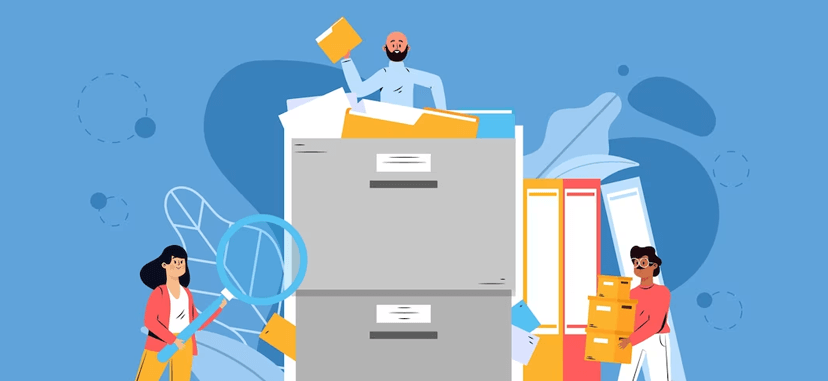
Click the button to start reading
You’ve Got This! A Step-By-Step Guide to Crafting an Unbeatable Quality Management Plan
No more worrying about managing quality in your projects. This guide has got you covered, offering a straightforward path to crafting a winning Quality Management Plan (QMP). After all, who doesn’t appreciate a bit of order in the chaos of project management?
A friendly nudge: Why you need to care about Quality Management Plan (QMP)
Let’s not beat around the bush, quality matters. In fact, in a world where businesses and projects are in a constant state of flux, managing quality has become a make-or-break factor. A well-crafted QMP isn’t just a fancy document gathering digital dust.
It’s your roadmap to meeting stakeholder expectations, achieving project deliverables, and most importantly, keeping your sanity amidst the project pandemonium.

How to Build Your Quality Management Plan Brick by Brick
Alright, no time to waste. Let’s dive into the nitty-gritty of creating a solid QMP.
Putting your hat on: Defining project requirements and objectives
You’ve been there, lost in the project wilderness, not sure which direction to take. That’s where setting clear project requirements and objectives swoops in to save the day.
They’re your North Star, guiding you toward project success. Think about what your project aims to achieve, what deliverables are expected, and what steps you need to take. Let’s call them your project’s must-haves, nice-to-haves, and got-to-dos.
You and your stakeholders: Meeting needs and expectations
Consider this: you’ve crafted what you believe is a groundbreaking project plan, but your stakeholders think otherwise.
That’s a disaster waiting to happen. When building your QMP, take the time to understand your stakeholders’ needs and expectations. Conduct meetings, send out surveys, or have informal chats. Whatever it takes to ensure everyone’s singing from the same hymn sheet.
What’s in it for you: Understanding project deliverables
Okay, let’s get real. You’re not managing quality for the sake of it. There’s a goal, right? Project deliverables.
These are the concrete outputs your project promises. They can be anything from a fancy new software system to an eye-catching marketing campaign. By defining these deliverables clearly in your QMP, you’re already halfway up the ladder of project success.

Setting the Standards: Your Secret Sauce to Winning the Quality Game
Standards are more than a set of arbitrary rules. They’re your path to project enlightenment.
Industry standards: Your pathway to compliance
Whether you’re in healthcare, finance, or digital marketing, industry standards provide a guiding framework for maintaining quality. They’re like the secret recipes used by top chefs.
By adhering to these, not only do you ensure compliance but you also give your project a competitive edge. So, it’s time to embrace these standards. Learn them, live them, love them.
Internal metrics: Your customized yardstick for quality measurement
While industry standards are essential, they don’t tell the whole story. That’s where your internal metrics come into play. These are your personalized indicators of success.
They could be things like reducing project errors by 20%, improving team productivity by 30%, or decreasing customer complaints by 15%. Remember, what gets measured gets managed, so choose these metrics wisely.
By the end of this part, you should be able to draft an initial version of your QMP that defines the project’s objectives, takes into account stakeholders’ expectations, and sets clear standards for success.
But hold your horses, there’s more to come. Stay tuned for the next part where we’ll delve into quality control and assurance. Trust us, it’s a game-changer.

Taking the Driver’s Seat in Quality Control and Assurance
Strap yourself in because this is where the rubber meets the road. In this part, we’re shifting gears and driving headlong into the world of quality control and assurance.
Your Game, Your Rules: Crafting the Quality Control Process
Quality control isn’t just about catching mistakes—it’s about making sure your project runs smoother than a well-oiled machine.
Getting down to brass tacks: Identifying quality control activities
First things first, you’ll need to pinpoint exactly what quality control activities need to be in place. Think of these as your safety net—they’ll catch any project errors before they become full-blown crises. For instance, in a software development project, this could mean integrating a rigorous code review process or setting up automatic error detection tools.
The team huddle: Assigning roles and responsibilities
Just like a sports team, your project team needs to know who’s doing what. Who’s responsible for checking the final product? Who’s in charge of running tests? Who needs to approve the end result? Hashing out these roles upfront makes your quality control process run like a Swiss watch.
Assurance is More Than Insurance: Fostering a Robust Quality Assurance Process
While quality control is about fixing errors, quality assurance is about preventing them in the first place. It’s your ticket to a worry-free project journey.
Keeping a hawk’s eye: Monitoring and reporting essentials
Quality assurance isn’t a set-and-forget process. It requires constant vigilance. That means routinely checking up on your project’s progress, running checks, and updating your QMP as needed.
Remember, the sooner you spot a potential issue, the easier it’ll be to rectify. And let’s not forget reporting—it’s one thing to keep tabs on your project’s quality, but you need to let the rest of your team (and stakeholders) in on the status too.
Who’s on it? Identifying team members’ roles in quality assurance
Don’t let quality assurance become a one-person job. Divide and conquer is the name of the game here. Maybe your software engineer is great at spotting potential bugs or your project manager has a knack for catching small details that others might miss. Use your team’s strengths to your advantage and assign roles accordingly.
There you have it, your crash course on quality control and assurance. But we’re not done yet—stay tuned for Part 3 where we’ll tackle the all-important topic of quality improvement. Remember, a QMP isn’t a static document—it’s a living, breathing entity that grows with your project. So, don’t be a stranger to revisions and updates. They’re the secret ingredients to a truly unbeatable QMP.

Embracing Change and Dancing with Risks
Get ready to shimmy and shake, because here’s where we dive into change and risk management—two critical moves in your quality management dance routine.
Change is the Only Constant: Why You Need a Stellar Change Management Process
They say change is the only constant in life—and projects are no different. You’re bound to encounter changes, whether it’s a surprise budget cut or a sudden shift in project objectives.
Laying down the process for managing changes: Because surprises aren’t always pleasant
Change can throw your project into a tailspin—if you’re not prepared. That’s why you need a robust change management process. It helps you anticipate and handle changes efficiently. Think of it as your project’s safety harness—it keeps you secure even when the project terrain gets a little rocky.
Assigning roles: Because everybody should know their part in the play
Just like a well-rehearsed play, everyone on your team needs to know their role when change comes knocking. Who’s responsible for assessing the impact of the change? Who needs to approve it? Having a clear roles-and-responsibilities chart helps everyone stay in sync and reduces the chances of a mid-project hiccup.
Be a Risk-Taker, Not a Risk-Maker: Mastering the Art of Risk Management
You don’t need to be a daredevil to handle project risks. All you need is a bit of planning and a pinch of proactivity.
Identifying risks: Because forewarned is forearmed
Spotting potential project risks ahead of time gives you a leg up. It could be anything from potential delays in your supply chain to a key team member going on sudden leave. Once you’ve identified the risks, you can create strategies to counter them—making sure your project stays on track.
Mitigation and avoidance: Your action plan to stay ahead of risks
Creating a risk mitigation and avoidance strategy is like charting a safe path through a minefield. You’re not just reacting to risks—you’re staying one step ahead of them.

All About Information, Documentation, and Outputs
Your project is a bustling hub of information and documentation—and you’re the maestro orchestrating it all.
Organizing the Mess: Streamlining Information and Documentation Management
Think of information and documentation management as your project’s central nervous system—it connects everything together and keeps everything running smoothly.
Keeping records: Because details matter
Every project detail, no matter how small, needs to be documented. It could be an email about a minor scope change or a meeting minute highlighting a crucial decision. Each document is a piece of the project puzzle, and you’re in charge of putting it all together.
Ensuring accessibility: Because everybody deserves the right information
Making sure your team has easy access to project information is key to project success. A central repository for documents? Check. Clear communication channels? Double-check. Your goal is to ensure that every team member can find what they need when they need it.
Quality Control and Output Review: Your Ladder to a Successful Project
The finish line is in sight. It’s time to double-check your outputs and make sure they’re up to snuff.
Monitoring and measuring: Making sure your outputs stand up to the test
Your project’s outputs aren’t just about hitting deadlines. They’re about delivering quality—and that means keeping a keen eye on them throughout the project.
Reviewing and evaluating: Because there’s always room for improvement
Remember, you’re not just ticking boxes here. Each output should be thoroughly reviewed and evaluated. And don’t be afraid of criticism—it’s not a roadblock but a stepping stone towards improvement.

Quality Management Tools: Your Trusty Sidekicks
Ever dreamed of having a sidekick? You know, a trusty partner that’s always there, ready to lend a helping hand? Well, in quality management, you can have just that. Let’s meet your quality management tools.
Why Manual Isn’t Always Better: Leveraging Quality Management Tools
You might be tempted to do it all yourself—after all, you’re pretty darn good at your job. But why break a sweat when you’ve got an arsenal of quality management tools at your disposal? They can help lighten the load and streamline your quality management process. And who doesn’t love a good efficiency boost?
A quick overview: From Quality Management Software (QMS) to Business Process Management Software (BPM)
You’ve got options—lots of them. From Quality Management Software (QMS) that helps you track and manage quality issues to Business Process Management Software (BPM) that lets you automate and optimize your business processes—there’s a tool for every challenge.
Real-life superheroes: Examples of effective Quality Management Tools
For example, Trello can help keep your project organized. You can create lists for each part of your quality management process and move cards around as tasks progress. On the other hand, a tool like Process Street could help with process documentation, giving you a clear picture of your workflows.
Conclusion
Recap: The A to Z of creating an impressive QMP
Alright, let’s hit rewind for a second. We’ve talked about everything from defining project requirements and objectives, setting up your standards, crafting the quality control and assurance processes, to managing changes and risks, and streamlining information and documentation management. Phew! That’s quite a journey, isn’t it?
Parting thoughts: How you can make a difference with an effective Quality Management Plan
Creating a Quality Management Plan isn’t just about ticking off a box in your project checklist. It’s about making a difference. It’s about delivering quality that wows your stakeholders, boosts customer satisfaction, and positions your business for success.
Remember, you’ve got the power to turn projects into success stories with a robust QMP. And with this guide in your toolkit, you’re well on your way to becoming a quality management maestro. So go ahead, take that leap, and make your mark in the quality management realm.
















